We can say that Egyptian mythology is one of the oldest and most mysterious in the world. It holds a special fascination for us, probably because we have many archaeological remains that allow us to imagine how they lived.
The Egyptian gods were related to each other, and like all families, there were sometimes disagreements. These served to demonstrate to the Egyptians the power and dominion of each God. Certain myths, such as the creation myth, the murder of Osiris, or the lost manuscript of Thoth, are an example of how these forces had an influence over the centuries.
Today we will show you a compendium of the most important gods and goddesses of Egyptian mythology:
Most important Egyptian gods

Ra
Ra is known in many Assyrian cultures as the god of the primordial sun, creation, and all living beings. The figure of Ra had very important cults throughout Egypt, as he represented a transformative force.
Myth tells us that he was dethroned by Isis because he was neglecting humans, and his way of doing so is another legend, and so on.
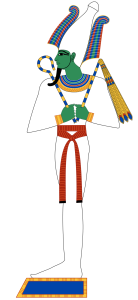
Osiris
Osiris was represented as the god of life and resurrection. Considered a magnanimous god with humans, he married his sister Isis, with whom he had a son, Horus the Avenger.
Osiris was dismembered by Set and his pieces thrown into the Nile River. Legend has it that the goddess Isis, his wife, collected all the pieces and Osiris was resurrected. In this way, he became the god of resurrection. This story actually symbolizes the cycle of life.
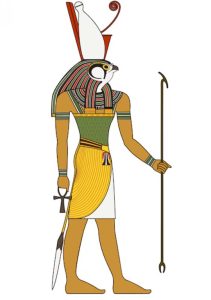
Horus
Horus the god of vengeance represented with the head of a falcon and the representation of an eye is famous, like the eye of Horus to say, that Horus sees everything.
Generally this Egyptian god was associated with the pharaohs as a symbol of royalty and guardian of the monarchs.
This god confronted his uncle Set and in the battle he tore out one of his eyes.
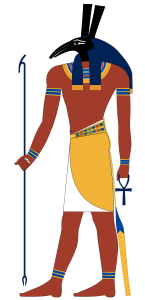
Set
Set was condemned to be the god of chaos, violence, rebellion, evil, scarcity, etc. He is an evil entity that symbolizes dark forces and chaos.
He was the god responsible for murdering Osiris and dismembering him throughout Egypt. Although in some cultures he was considered a neutral god, like the god of borders.
In a fight with Horus, he lost an eye, but Set lost his testicles, hence he also represents infertility and the desert sands.
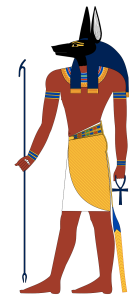
Anubis
Anubis is the God of the underworld, the dead, and spirits. He is the patron saint of embalmed bodies. His importance was crucial as the god of the dead, he was responsible for judging and purifying the souls and hearts of the deceased.
One myth tells that he was the illegitimate son of Osiris and Nephthys, and that he and Isis went to help reconstruct Osiris’s body. He was then assigned mummification to ensure that bodies would remain incorruptible, and was responsible for welcoming the deceased.
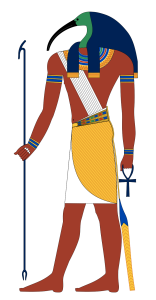
Thot
Thot was represented as the god of writing, the arts, and agriculture, considered the god closest to humans, the one who teaches them how to live, the one who takes notes on their journey to the afterlife. He is the scribe par excellence and their patron.
Thot was considered by the Greeks to be equivalent to the god Hermes, and within Egyptian mythology, he is one of the judges who accompanies the deceased to the judgment of the goddess Maat.
Most important Egyptian goddesses
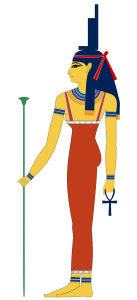
Isis
Isis symbolizes the goddess of women, fertility, and magic. Her healing powers and protection of the weak made her very popular.
Her cult was one of the most powerful. She was represented with the outstretched wings of a bird and a crown, sometimes in the shape of a throne and sometimes with a feather. She represented the archetype of the pharaoh’s mother.
She was the partner of Osiris and the mother of Horus. She was the figure responsible for the resurrection of her husband and the confrontation with the god Set.
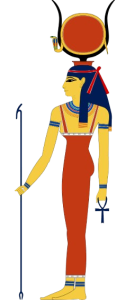
Maat
Maat is represented as the goddess of justice and order. Considered the daughter of Ra, she was highly venerated because her representation exerted great influence on the deceased’s passage to the afterlife.
She was represented, like the goddess Isis, as a bird with outstretched wings and a crown with a bird feather, which in turn represented the feather of truth.
In front of Maat, one could not lie; it was a reason for not entering the afterlife. Maat was also cosmic balance; this had to remain unchanged so that the world of the gods could continue to govern on Earth even in her absence.

Hathor
Hathor is the goddess of love, music, beauty, and sometimes war. She was actually a goddess related to Ra, sometimes considered his wife and sometimes his daughter.
She is also associated with being the wife of Horus, in both cases from the lineage that comes from the sky, the first lineage of the gods.
Because of her kinship with Ra, she has that destructive side, assuming in some narratives the role of the “eye of Ra,” thus bringing out her vengeful and warlike side.
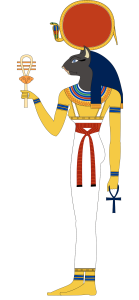
Bastet
Bastet, represented by a cat, was the protective goddess of the home in charge of giving happiness.
According to myths, this Egyptian goddess carries a sistrum (musical instrument), because she especially liked humans to dance and play music in her honor.
Throughout the ancient Egyptian empire, many statues of cats were found, and in fact it was believed that these animals were living representations of the goddess.
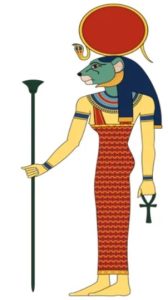
Sekhmet
Like Set, Sekhmet was a female representation of chaos, war, and destruction. Like other deities, she represented the archetype of the warrior for the pharaoh.
She was the daughter of Ra and was in charge of protecting his domains. According to the myths, Sekhmet’s anger was implacable, and many of her followers sacrificed animals to gain the favor of the goddess.
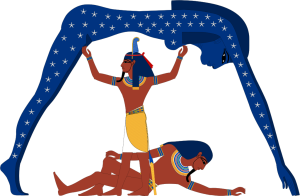
Nut
One of the peculiarities of this Egyptian goddess is her representation as a starry sky in the form of a woman. Nut, in fact, is one of the oldest deities and her representation is guided by the Milky Way and motherhood.
In myths, she was the mother goddess of Osiris, Isis, Set, Nephthys, and Horus. Ra, the sun god, navigated through her, and the god Thoth was attracted to her.









